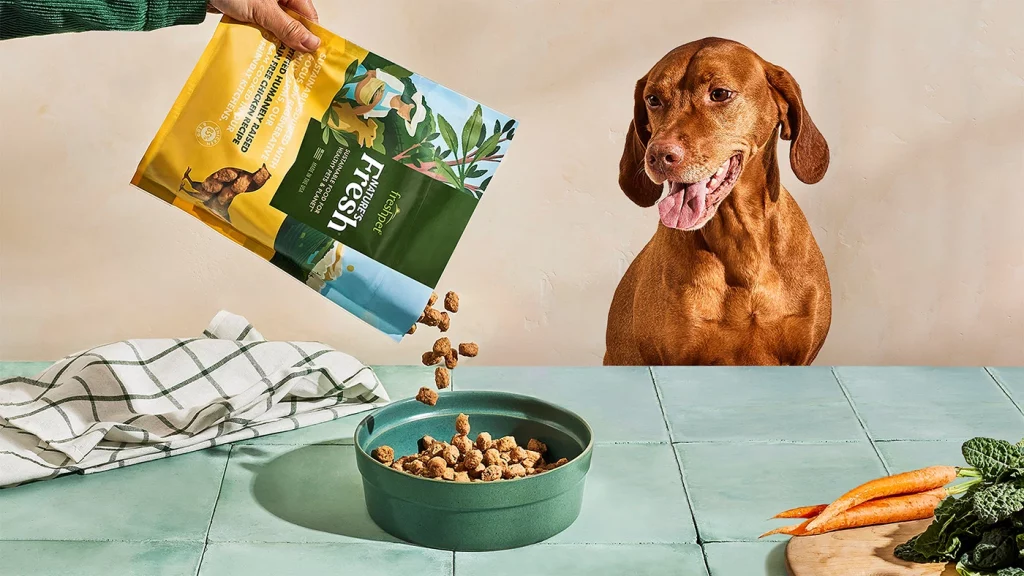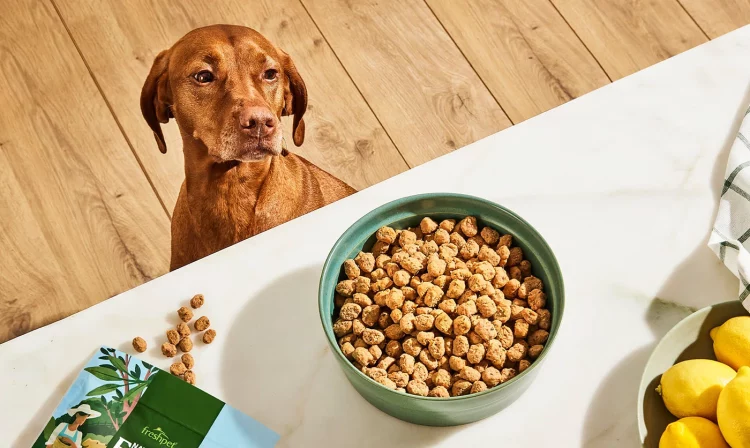As the global focus on sustainability continues to grow, more pet owners are becoming aware of the environmental impacts of their pets’ diets. In 2024 and beyond, sustainability in pet food production is not just a trend but a movement towards creating more eco-friendly, health-conscious, and ethical choices for both pets and the planet. This includes a focus on the ingredients used in pet food, the packaging of products, and the overall ecological footprint of pet food companies.
If you’re interested in making more environmentally responsible choices for your pets, this guide will help you explore eco-friendly ingredients, sustainable packaging practices, and some of the top sustainable pet food brands leading the charge in the 2024-2025 era.
Exploring Eco-Friendly Ingredients and Packaging
When it comes to sustainability in pet food, two primary factors come into play: the ingredients that go into the food and the packaging that holds it. Let’s break down each of these components:
Eco-Friendly Ingredients
The types of ingredients used in pet food are an essential part of the sustainability conversation. In the past, many traditional pet foods relied on animal by-products, grains, and fish caught through unsustainable practices. However, recent trends are shifting toward alternative ingredients that are more environmentally friendly, such as:
- Insect Protein
Insect protein, such as cricket and mealworm-based ingredients, has gained popularity as a sustainable alternative to traditional animal-based proteins. Insects are highly efficient at converting feed into protein, require less land and water, and emit fewer greenhouse gases compared to traditional livestock farming. - Plant-Based Proteins
As the demand for plant-based diets increases among humans, pet food manufacturers have also started using plant proteins, such as peas, lentils, chickpeas, and quinoa. These plant-based options offer a low environmental footprint and are rich in fiber, vitamins, and minerals. - Sustainably Sourced Meat
Many brands are prioritizing humanely raised and sustainably sourced meat options, such as free-range chicken, grass-fed beef, and wild-caught fish. These meats are typically produced with more attention to ethical farming practices and environmental conservation. - Seaweed and Algae
Seaweed and algae have emerged as a promising sustainable ingredient in pet food. Rich in omega-3 fatty acids and fiber, they offer a nutritional alternative to fish-based oils and can be farmed in ways that don’t harm marine ecosystems. - Locally Sourced Ingredients
Sourcing ingredients locally reduces the carbon footprint associated with transporting ingredients over long distances. Local sourcing is an effective way to support regional economies and reduce the environmental costs tied to global food transportation.
Eco-Friendly Packaging
Packaging waste is a significant concern in the pet food industry, with many products still being packaged in plastic bags or containers that are difficult to recycle. However, as sustainability becomes more of a focus, several eco-friendly packaging options are emerging:
- Biodegradable Packaging
Biodegradable packaging made from plant-based materials, such as cornstarch or mushroom fibers, is gaining traction. These materials decompose naturally over time and leave behind minimal waste, helping reduce the impact of packaging on landfills. - Recyclable and Compostable Bags
Many companies are switching to recyclable or compostable bags, which allow pet owners to dispose of packaging responsibly. Some brands use materials such as paper, cardboard, or plant-based plastics that break down naturally and are easier to recycle. - Reusable Containers
A growing trend in sustainable pet food packaging is the use of reusable containers. Some pet food companies are offering products in bulk, allowing pet owners to purchase food without the need for single-use packaging. Reusable containers help reduce waste and are a more eco-conscious option for those who buy pet food in larger quantities. - Minimalist Packaging
Some companies are taking a minimalist approach to packaging, reducing the overall amount of material used. This includes using simple, lightweight bags or containers that require fewer resources to produce and transport.
How Sustainability Is Shaping the Future of Pet Nutrition
Sustainability is not just about eco-friendly ingredients and packaging; it’s also shaping the way pet food manufacturers approach nutrition and their supply chains. As more consumers seek environmentally responsible choices, pet food companies are recognizing the need to meet these demands while maintaining pet health and well-being.
1. Circular Economy in Pet Food Production
The concept of a circular economy is gaining momentum in the pet food industry. This involves reducing waste and making the most of available resources. For example, companies are finding creative ways to use food waste—such as using leftover vegetables, fruits, or by-products from food processing—as ingredients for pet food. This reduces the need for additional agricultural inputs and minimizes food waste.
2. Transparency in Sourcing and Manufacturing
Consumers are increasingly concerned about the origins of the ingredients in the products they purchase. In response, many pet food companies are offering greater transparency in their sourcing and manufacturing processes. Brands that prioritize sustainability often provide detailed information about where their ingredients come from, how they are produced, and the environmental impact of their manufacturing processes.

3. Ethical Farming and Animal Welfare
In the 2024-2025 pet food landscape, more companies are focusing on ethical farming practices. This includes supporting farmers who prioritize animal welfare, use less harmful pesticides, and raise animals in more humane conditions. For pet owners who prioritize animal rights, choosing pet food brands that support ethical farming practices can help ensure that their pet’s diet aligns with their values.
4. Carbon Offsetting and Eco-Friendly Transportation
As part of their sustainability initiatives, some pet food companies are investing in carbon offset programs to neutralize the carbon emissions generated by their manufacturing and distribution processes. In addition, eco-conscious brands are adopting more sustainable methods of transportation, such as using electric vehicles or reducing transportation distances by sourcing ingredients locally.
Top Sustainable Pet Food Brands to Consider
As sustainability continues to be a driving force in the pet food industry, several brands are leading the way in offering eco-friendly options that prioritize both pet health and environmental responsibility. Here are some of the top sustainable pet food brands to consider in 2024-2025:
1. The Honest Kitchen
The Honest Kitchen is committed to using organic, human-grade ingredients and sustainable practices. They offer a range of dehydrated and wet foods for dogs and cats, using locally sourced ingredients where possible. Their packaging is compostable, and they focus on transparency in their sourcing and production methods.
2. A Pup Above
A Pup Above offers sous-vide cooked pet food made from responsibly sourced ingredients, including free-range chicken and grass-fed beef. Their products are free from fillers, additives, and preservatives, and they use minimal packaging that is recyclable.
3. Wild Earth
Wild Earth is at the forefront of plant-based pet food. They use sustainably sourced ingredients like fungi and pea protein, reducing the reliance on animal products. Their packaging is recyclable, and they are committed to sustainability in all aspects of their operations.
4. Open Farm
Open Farm offers both wet and dry food for dogs and cats, using ethically sourced proteins like grass-fed beef and free-range chicken. They prioritize sustainability at every step, from farm to packaging, and their products are packaged in recyclable bags made from post-consumer recycled materials.
5. AAFCO-Compliant Sustainable Brands
For pet owners looking for certified, sustainable food brands, many options comply with AAFCO (Association of American Feed Control Officials) guidelines. Brands like Canidae and Nature’s Logic focus on using high-quality, sustainable ingredients, while also reducing their environmental footprint through eco-conscious packaging.
6. Nestle Purina Petcare
Though not strictly a “sustainable-only” brand, Nestlé Purina has made considerable strides in improving its sustainability practices. The company has committed to reducing carbon emissions, sourcing ingredients responsibly, and using eco-friendly packaging options for its range of pet food products.
Conclusion: Sustainable Pet Food – A Growing Movement
As the pet food industry continues to evolve, sustainability is becoming an increasingly important consideration for pet owners. In 2024 and beyond, the use of eco-friendly ingredients, sustainable packaging, and ethical sourcing will shape the way we feed our pets. By supporting brands that prioritize sustainability, pet owners can make a positive impact on the environment while still providing their pets with high-quality, nutritious food.
Choosing sustainable pet food options is a great way to reduce your pet’s ecological footprint without compromising their health. Whether you’re looking for plant-based proteins, insect-based meals, or brands that focus on ethical sourcing and minimal waste, there are more sustainable options than ever before. As you consider the best choices for your pet’s nutrition, keep in mind that your decisions can have a lasting impact on both your pet’s well-being and the planet’s future.























































